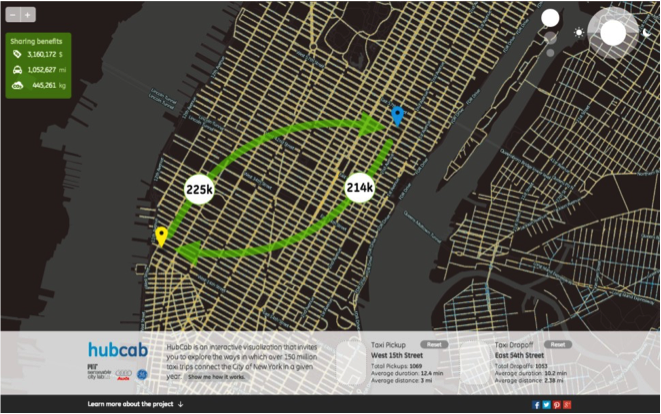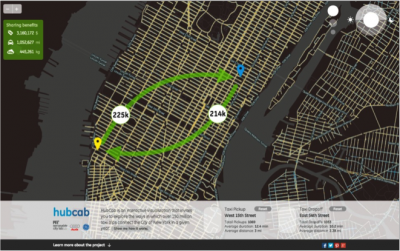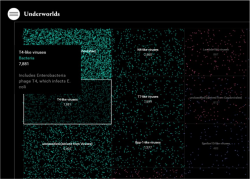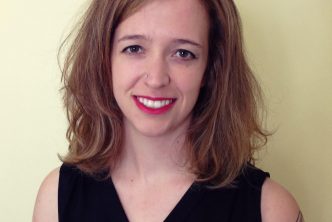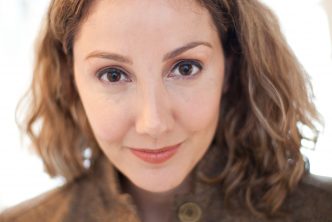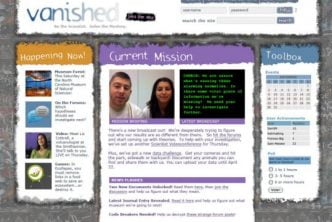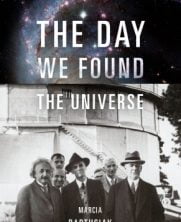“SENSEable City Lab is Rethinking Urban Planning from the Underground Up” won the 2017 DeWitt Wallace Prize for Science Writing for the Public.
“Would you mind, could I ask a couple of questions about the lab?” asked the man on the screen. He was just finishing up a Skype interview for a research position at the SENSEable City Laboratory at the Massachusetts Institute of Technology. He looked expectantly into the camera. Though he could only see the administrator, Rachel Seavey, the room was full of people finishing a meal of turkey, stuffing, mashed potatoes and apple pie at a long rectangular table (this week’s Lab Lunch was Thanksgiving themed). Seavey paused and looked around the room; there were no objections. “Of course, go right ahead.” she replied.
“So first, what would you say is the focus of the lab? What will be happening in the next year?” A perfectly reasonable question for someone looking for a job, you might think, but the room filled with a quiet, knowing laughter, as if this was a longstanding inside joke. Glances were tossed across the room as Seavey offered the question to the crowd: “Anyone want to take this one?”
Most people leaned back in their chairs, raised their hands as though in surrender- no way they could take that question on. But one man, sitting in the corner and wearing thick-rimmed glasses and a grey flannel shirt, raised his hand to volunteer. This was Anthony Vanky, a PhD candidate in Urban Studies and Planning at MIT, and a partner researcher and strategist at the lab, according to his website.
He began with a sigh as he collected his thoughts. “The problem is that, in a lab of about 30 people, we have just as many projects.” This is no exaggeration, as the lab performs research in a wide variety of topics. For example, a favorite project of some of the lab’s researchers is one called “Hubcab”, which graphed the locations of taxi pick-ups and drop-offs in New York City over the course of one year, displayed as blue and yellow dots, to show that it may be more efficient to share cabs with strangers, rather than to have every person use their own cab, as we do now. This research influenced Uber’s “Uberpool” feature, which does exactly what the research suggests- it allows users to decide whether to share an Uber ride, considering the time delay (usually less than 5 minutes) and the monetary savings. The Hubcab website also displays the savings in terms of mileage and kilograms of carbon dioxide. While Hubcab took a very broad perspective of a city’s overall transportation efficiency, another project called “Road Frustration Index” took a more personal approach to the issue of city driving. This team measured the stresses of city driving as compared to other activities such as having breakfast, taking an economics class, and skydiving. The drive took place during peak city traffic and even included a small collision, which gave the subject a measureable spike in stress that was comparable to the stress he experienced while jumping from an airplane.
During the lunch, researchers discussed ideas for new projects they wanted to pursue. One man suggested creating an algorithm to assess the efficiency of a city’s transportation system and even optimize it, and another wanted to build and track sensors to measure the movement of geographically based European borders, some of which are actually moving due to climate change. In general, to answer the interviewee’s question, Vanky described the lab as focusing on mobility and “sensing” (with both physical sensors and data tracking, like analyzing the GPS data from phones and New York City cabs), and using modern means to understand and suggest improvements to the characteristics of a city. The scope of the lab is so broad, he even forgot almost a third of the people attending the lab lunch that day. As Vanky started to sit down, they protested from the corner; “Don’t forget the environment!” A group inside the SENSEable City Lab also focuses on environmental concerns of cities, and conducted projects like “Local Warming,” which focused on the efficiency of heating systems in city buildings. As Vanky put it, the SENSEable City Lab “has everything from 3D printing to sewage testing.”
Down a long beige hallway across from the main SENSEable City Lab offices is a small side room filled with whirring computers and a cluttered table that stretches the entire length of the wall opposite the door. To the left of the doorway is a five-foot tall contraption made of wood and clear piping. This is the workspace for the Underworlds team, a group of researchers and students who further exemplify the diversity and interdisciplinary nature of the Lab, where both the projects varied and the skills of the people working on them are widely varied. In the Underworlds work room on this day is a group of three researchers, including an MIT sophomore studying mechanical engineering who joined the team through the Undergraduate Research Opportunity Program (UROP), a graduate student on an exchange from France whose interest is mainly in data visualization, and their leader, a research fellow and project manager Newsha Ghaeli, whose specialty is in city architecture and urban resilience. Ghaeli explains the Underworlds project in terms of assessing the health of a city by analyzing “the collective gut,” also known as the sewers. The team has been taking samples from sewers, and knows, from flow data, what areas of the city contributes to the sample. They then analyze the samples for whatever bacteria, viruses, and chemicals are inside. For the first few months of the project, sewage samples actually had to be collected by hand, but, luckily, in the past month and a half, two prototype robots have been built and tested, so now they’re the ones getting their hands dirty. As is only appropriate (at least at MIT) for a pair of pipe-exploring robots, Version 1 and Version 2 are referred to as Mario and Luigi by the Underworlds team. Ghaeli explains the first robot’s name. “He went in sewers and made noise like Mario… and he’s fat… and now this one’s Luigi because he’s faster and thinner,” and she motioned to indicate the large wood and pipe contraption next to the doorway.
Ghaeli passionately believes that the information collected from the sewage samples holds a lot of potential for use by city officials when it is made available to them. Some applications she imagines for the project are identifying the origin of a disease outbreak, and assessing the efficacy of public health policies. She specifically points to the Sugary Drinks Portion Cap Rule, put in effect in early 2013 by former Mayor Michael R. Bloomberg, which limited the size of soft drinks sold in New York City to sixteen ounces, or half a liter. Although the ban on big sodas was reversed in 2014, Ghaeli says that if a system like Underworlds was in place while the cap was active, they could have measured the efficacy of the cap in terms of quantitative public health. This data could have provided proof that the law was a productive step toward decreasing conditions like obesity and diabetes based on biomarkers in the samples, and thus the cap might not have been lifted. Alternatively, the data could have shown that the ban hadn’t achieved anything, which is just as useful. “So if you put on a cap on the amount of salt that can be introduced into consumer products… will that actually work to reduce people’s salt intake? So this is a way of actually monitoring that after making those decisions.”
Underworlds is still in its first stages, with an unfinished (but publicly available) website (underworlds.mit.edu) that begins with bold black text on a blank white screen: “A vast reservoir of information on human health and behavior lives in our sewage. And this resource is untapped.” As the internet user scrolls downward, a black screen suddenly fills with colorful dots as a bold white number begins counting up until it reaches 58,309- the number of viruses in an average sewage sample collected by the Underworlds team. The website goes on to organize the viruses, shown as colored dots, by classes like “T4-like” and “SP6-like” viruses, and gives more details when the user puts the curser above the category. Eventually, the team plans to make the same sort of visualizations for the bacteria and chemicals from a sewage sample available on the website as well. This is an overarching goal of the SENSEable City Labs, and something that Ghaeli believes s of upmost importance: publicly available data, also called Open Data. In a Twitter discussion tagged “#IoTuesday”, Ghaeli addresses the question posed by ReWork, “How can we ensure that data generated across [a] smart city is useful to citizens, business, and [government]?” with the enthusiastic answer, “Open data, open data, open data!” She goes on to elaborate by saying “Also, building intuitive and interactive front-end visualizations. Check out hubcab.org.”
Ghaeli isn’t the only member of the SENSEable City Lab to point to HubCab as an example of particular success. Assistant director of the Lab, Erin Baumgartner, also remembers the project as one of her favorites. For Baumgartner, who has worked at MIT for eight years and the Lab for two, HubCab is an example of what the Lab always strives to achieve. “One of the most interesting things about our lab is that we’re able to do this data science, and then find a way to translate it into language that people speak and understand.” For HubCab, this was the interactive and intuitive website that plotted the points of pick ups and drop offs by New York City cabs over the course of the year. Baumgartner explains that they built this website and made it available to anyone “because you can’t take a graph and put it in the newspaper and then tell everyone to change their behavior just because MIT said so.”
With all the talk of GPS records from phones and cabs, and health information with known geographical sources, one has to wonder about the issue of privacy. One of Baumgartner’s jobs as the Assistant Director is to deal with the paperwork, which she refers to, after a careful pause, as “very comprehensive”, involved in assuring the privacy of companies and individuals involved in the research, ensuring that all individual data is anonymized. Baumgartner clearly empathizes with anyone worried about their privacy in the wake of big data analysis. “It’s scary,” she says, “You don’t want people drilling down to know, who are you calling, and when, and what are you spending, and how much? But we, [at SENSEable City Lab], are less interested individuals as we are in the larger scale… and we’re never interested that it’s directly you as a person.”
Along with the paperwork involved in ensuring privacy, Baumgartner’s job as assistant director also puts her in charge organizing the interdisciplinary teams like that of Underworlds. She says it isn’t that difficult to get different kinds of researchers together, because with the Lab’s open format they have “the mathematicians next to the physicists next to the designers, and it’s like you’re just sort of encouraging atoms to collide.” There are also organized events to keep the Lab actively learning from each other, like the weekly Lab Lunch on Wednesdays, and an activity Baumgartner calls a “Teach me something” on Fridays, where an expert in an area can give a talk to anyone interested in learning from them. But Baumgartner knows that this kind of interdisciplinary interaction isn’t entirely unique to the lab, though it may be emphasized there. Still, it’s an extension of the MIT culture of collaboration. She says, “I think that MIT does a great job of encouraging [interdisciplinary work] and allowing it… We have a lot of projects that don’t sit singularly in our lab, but have connections with other labs, and I think MIT faculty are encouraged to collaborate across disciplines.”

